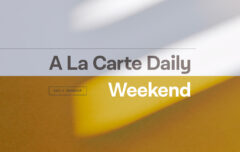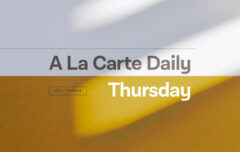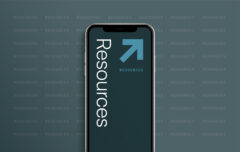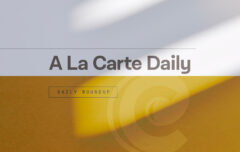
Last week we began reading through John Stott’s classic work The Cross of Christ. The book began by pointing out the centrality of the cross. This week’s reading was chapter 2 which asks and answers an all-important question: Why Did Christ Die?
Why Did Christ Die?
I enjoyed this chapter not only for what it teaches but also for its literary qualities. Stott writes in such a way that by the end, truth is cascading upon truth, and the heart is lifted in praise. It truly packs a punch.
To answer the question Why Did Christ Die?, Stott first looks to the Roman leaders, the Jewish leaders and then to Judas Iscariot, showing how each one played a role in Jesus’ death. But where the chapter begins to really pull together is toward the end where he shows that the truest and deepest answer leads us not to blame others, but to blame ourselves.
Herod and Pilate, Gentiles and Jews … had together “conspired” against Jesus (Acts 4:27). More important still, we ourselves are also guilty. If we were in their place, we would have done what they did. Indeed we have done it. For whenever we turn away from Christ, we “are crucifying the Son of God all over again and subjecting him to public disgrace” (Heb 6:6). We too sacrifice Jesus to our greed like Judas, to our envy like the priests, to our ambition like Pilate. “Were you there when they crucified my Lord?” the old negro spiritual asks. And we must answer, “Yes, we were there.” Not as spectators only, but as participants, guilty participants, plotting, scheming, betraying, bargaining and handing him over to be crucified. We may try to wash our hands of responsibility like Pilate. But our attempt will be as futile as his. For there is blood on our hands.
Stott now provides one of his best-known quotes:
Before we can begin to see the cross as something done for us (leading to faith and worship), we have to see it as something done by us (leading us to repentance). Indeed, “only the man who is prepared to own his share in the guilt of the cross,” wrote Canon Peter Green, “may claim his share in its grace.”
Stott also looks to the tricky relationship between what was done to Jesus by Judas, the religious leaders and the secular leaders and what was done by the Father and by Christ himself.
On the human level, Judas gave him up to the priests, who gave him up to Pilate, who gave him up to the soldiers, who crucified him. But on the divine level, the Father gave him up, and he gave himself up, to die for us. As we face the cross, then, we can say to ourselves both, “I did it, my sins sent him there,” and “He did it, his love took him there.” The apostle Peter brought the two truths together in his remarkable statement on the Day of Pentecost, both that “this man was handed over to you by God’s set purpose and foreknowledge” and that “you, with the help of wicked men, put him to death by nailing him to the cross.” Peter thus attributes Jesus’ death simultaneously to the plan of God and to the wickedness of men. For the cross which, as we have particularly considered in this chapter, is an exposure of human evil, is at the same time a revelation of the divine purpose to overcome the human evil thus exposed.”
That is almost too good and too wonderful to believe.
Returning to the question posed in this chapter, he writes, “Why did Jesus Christ die? My first answer was that he did not die; he was killed. Now, however, I have to balance this answer with its opposite. He was not killed; he died, giving himself up voluntarily to do his Father’s will.”
What a beautiful ending to a beautiful chapter.
Next Week
For next week please read chapter 3, “Looking Below the Surface.”
Your Turn
The purpose of this program is to read these books together. If you have something to say, whether a comment or criticism or question, feel free to use the comment section for that purpose.









